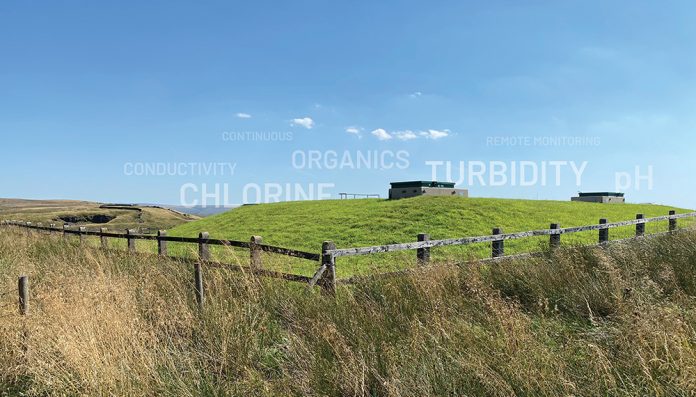Careful management of service reservoirs is essential to safeguard drinking water quality, requiring accurate and reliable monitoring for a detailed understanding of supply configuration, asset condition, along with and the expertise of a multi-disciplined team. ATi discusses how the data provided from analytical sensor technology can provide vital insights into reservoir performance, allowing the optimisation of systems and the early identification of issues to prevent the deterioration in water quality, compliance breaches and regulatory sanction.
Service reservoirs are a fundamental component of water distribution networks, providing vital reserves of treated water to supply system shortfalls during peak demands. Over recent years, the water industry has become far more knowledgeable about the need for optimisation of service reservoirs, recognising the significant role they play in delivering clean, safe water and regulatory compliance is now more important than ever.
The storage of water within service reservoirs can represent a risk to the quality of drinking water if not closely monitored, resulting in the reduction in chlorine concentrations due to long water age leading to bacterial growth, ebb and flow supplying mains may be present, poor mixing characteristics and the potential for ingress following structural failure when residence times are excessive. It is therefore essential to perform regular inspections and monitoring to ensure they operate in a manner that maintains necessary disinfection levels.
Historically, the quality of water within service reservoirs was monitored through the collection and analysis of grab-samples on a weekly basis. Such a monitoring regime, however, is unable to rapidly identify any sudden deterioration or variation in water quality. As a result, it is now widely acknowledged that weekly sampling is no longer adequate to appropriately manage water quality for the optimisation of asset operation.
Monitoring critical parameters at inlets & outlets
Continuous, smart sensor technology monitoring of critical water quality parameters, including chlorine residual, conductivity, turbidity and pH, plus BOD, COD, TOC & DOC organics, at even the most remote locations is now possible. Smart water quality monitoring solutions, such as ATi’s MetriNet for the critical water quality parameters and s::can’s spectro::lyser for organics, provide water companies with industry-leading, tried and trusted methods for providing data points from as little as one minute apart onto any chosen platform.
The installation of such proven, continuous monitoring solutions, both on the inlet and outlet of service reservoirs, is enabling water companies to meet compliance while understanding the operation, performance and management.
Regulatory Compliance
The installation of continuous monitoring instrumentation allows detailed understanding of the reasons for low chlorine levels eg is it due to the incoming supply at certain times of the day or residence within the reservoir? Such insight allows operational modifications to be made, including changes to supply routes or forced turnover of water within the reservoir in order to improve chlorine concentrations and protect against statutory sample breaches. Often, forced turnover is the natural response to low chlorine levels, however, if the issue is actually upstream then this could jeopardise resilience without addressing the root cause.
Microbiological Sample Failures
Ingress into service reservoirs following heavy rainfall is one of the most common reasons for microbiological sample failures and this can result in a loss of chlorine residual or changes in other parameters, such as conductivity. Where monitoring of water quality relies upon infrequent grab sampling, it could be sometime before issues are identified and, in many cases, after the water has reached the tap. Through proactive online monitoring, unexpected changes in water quality can be swiftly identified, and when aligned with information such as rainfall, allows for urgent investigation, intervention and mitigating action.
Summary
Service reservoirs are essential for the effective operation of water supply systems and for ensuring customer taps keep flowing. By their very nature, they pose a risk to drinking water quality, therefore effective monitoring is vital to optimise usage and to forewarn of any issues. Advances in smart sensor technology, battery-powered units and mobile communications means that accurate, reliable and continuous monitoring is helping water utilities to make informed decisions on management and optimisation, not only ensuring that supply demands are met, but crucially that safe water is being delivered.
For more information visit analyticaltechnology.com



